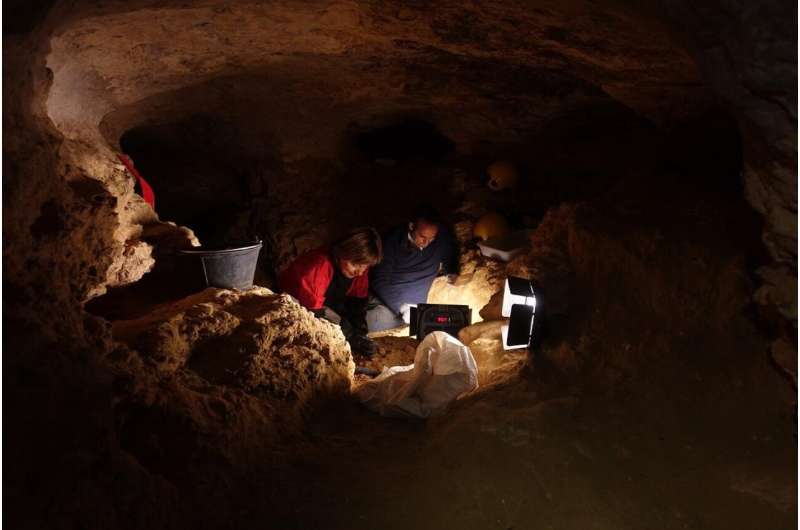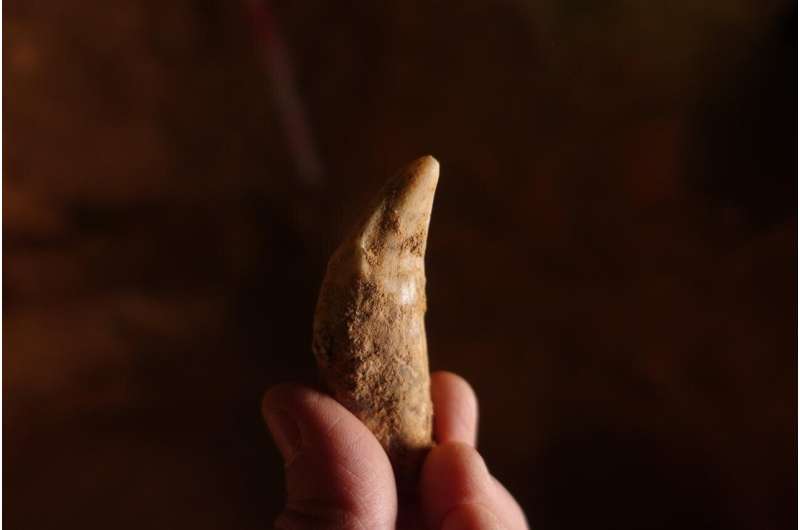Around 35,000 years ago, Central Iberia had a tundra-steppe landscape

A study just published by the journal Quaternary Science Reviews, headed by Nohemi Sala, an expert on taphonomy at the Centro Nacional de Investigación sobre la Evolución Humana (CENIEH), presents the results of the investigations carried out in the cave site of Portalón del Tejadilla in Segovia, which confirm a cold and extremely arid climate at a latitude never previously documented in the Iberian Peninsula.
The current archaeological evidence points to a hiatus in Paleolithic populations in the center of the Peninsula coinciding with the peak of the climatic period termed Marine Isotope Stage 3 (MIS 3), between 42,000 and 28,000 years ago. This paucity in the archaeological record makes the task of reconstructing the climatic and ecological conditions of the Iberian Peninsula and therefore hampers understanding of the extent to which the climate influenced the dynamics of the human populations.
Analysis of the faunal remains at Portalón del Tejadilla has made it possible to infer climatic conditions indicating a period of extreme aridity and cold in an open environment, compatible with the ecosystems of Eurasian steppe-tundra.
Spotted hyenas
The excavations at Portalón del Tejadilla started in 2012, with financing from the Consejería de Cultura y Turismo of the Junta de Castilla y León, and since then fossil remains of wild horses and asses, hyenas, bison, woolly rhinoceroses and giant deer, in addition to cave bears and lions, have been recovered.

Spotted hyenas occupied this cave between 39,000 and 34,000 years ago, and the bone remains of the animals they consumed built up over time. These findings extend the known paleogeographic range of species such as the woolly rhinoceros (Coelodonta antiquitatis) and giant deer (Megaloceros giganteus).
This site enables the paleontological record of the Valle del Tejadilla area, where the neighboring caves of El Búho and La Zarzamora stand, to be expanded, and taken together, these allow a substantial process of cooling and aridification in the middle of MIS 3 to be detected in Central Iberia, which could have influenced the human populations in the region.
"The environmental conditions prevailing during the period from 45,000 to 30.000 years ago are of vital importance for tackling the transition between the Middle and Upper Paleolithic, that is, between the Neanderthals and the first representatives of our own species in Europe ", says Sala.
More information: Nohemi Sala et al. Central Iberia in the middle MIS 3. Paleoecological inferences during the period 34–40 cal kyr BP, Quaternary Science Reviews (2019). DOI: 10.1016/j.quascirev.2019.106027
Journal information: Quaternary Science Reviews
Provided by CENIEH





















